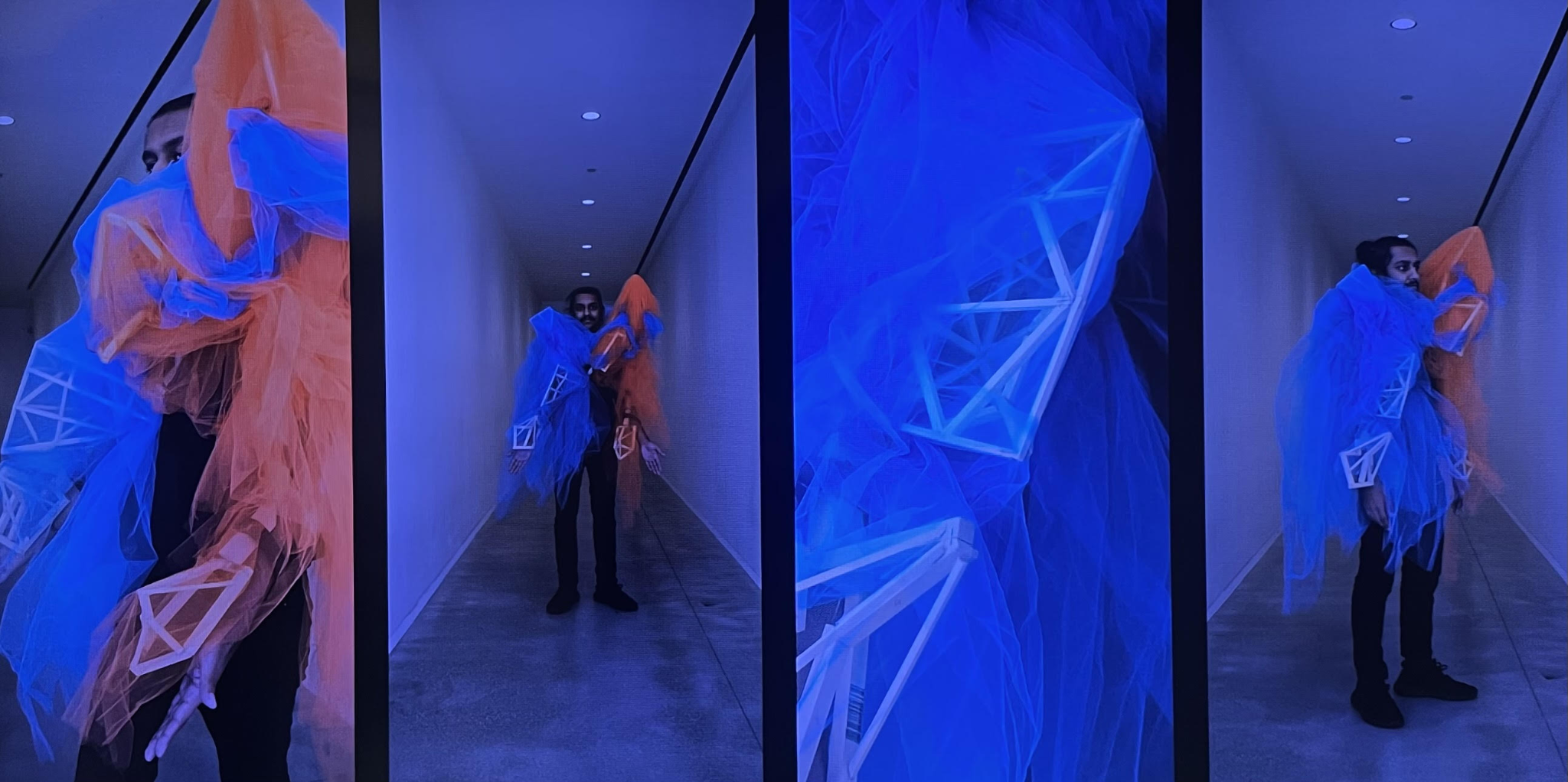Architecture Meets Reproductive Justice
A new exhibition at the American Institute for Architecture’s Center for Architecture in the West Village explores access to healthcare through the built environment.
By Carolyn Gevinski
Entry to the “Spatializing Reproductive Justice” exhibition.
A bright, neon green banner blasting the message, “THIS IS A PUBLIC SERVICE ANNOUNCEMENT” wraps itself around the walls of the Spatializing Reproductive Justice exhibition at the Center for Architecture in New York City. The Center for Architecture—where the exhibition is being hosted for the first time—is a cultural hub for understanding the built environment in New York City.
The exhibition “showcases messages of hope as well as urgent calls to action, underscoring the architect’s role and responsibility in designing spaces that enhance equitable access to healthcare,” said Executive Director at the Center for Architecture Jesse Lazar, in a press brief.
On Thursday, May 2, 2024, the Center opened the exhibition to address the spatial, legal, and social logistics of reproductive and sexual health justice in the wake of both the 51st anniversary of Roe v. Wade and the second anniversary of the Supreme Court overturning Roe,eliminating the federal right to abortion. Co-curated by professors Lori Brown, Lindsay Harkema, Bryony Roberts, with graphic designer FLUFFFF Studio, the exhibition is inspired by student research from their graduate-level architecture courses at Syracuse University, The City College of New York, and the Columbia University Graduate School of Architecture, Planning and Preservation.
Outside the Center for Architecture in the West Village.
Upon entry, an ominous crimson chart details restrictions on reproductive healthcare by state over the years. The deepest red colors indicate the highest periods of criminalization of abortion. In the 1820s, we see that most states are colored dark red to indicate the beginning of criminalization and the strict continuation of illegality of abortion. From 1973 to 2022, a light pink color points to legalization of abortion under Roe v. Wade. This shows a slow but steady progression of reproductive rights, which eerily comes across as a sort of warning.
But beginning in June 2022, the overwhelming majority of states begin to turn dark red again—some sinking into the same deep maroons that covered the 1820s section—symbolizing a regression in bodily autonomy.
Turning right after entering the exhibition leads the viewer to a television screen display of sensory material explorations for reproductive care. The people on the screen may appear to be wearing a new avant-garde style, including patchwork quilts draped over their heads, or great silver caterpillar tubing that covers their whole body, but these images actually represent studies of how we architects and designers can reimagine healthcare environments that feel “hostile and isolating,” and contribute to better exchanges between providers and patients.
Sensory-Material Explorations (Meakins’ studio brief, 2022)
Underneath the sensory material explorations is a curious board game display, called “Abort Game.” The caption underneath describes Abort Game as “not a fair game.” The goal is for the players to explore the many factors that may influence a person seeking abortion in a post-Roe world. According to the researcher Lisa Maillard, “Every player starts from a different vantage point according to which state in the contiguous US they live in.” One player might begin in New York and simply have to walk to their nearest clinic. Another player in Mississippi may be forced to travel hundreds of miles.
Abort Game by Lisa Maillard, MA in Research Architecture Goldsmiths, University of London (Fall 2022)
Additional studies and explorations on display include a reimagined map of resources in New York City, maps and photos of Planned Parenthood locations in New York that were designed by architects who specifically catered to the intersectional elements of reproductive healthcare, guides for clinic design, and additional timelines of reproductive rights in the United States.
In 2016 and 2021 respectively, Stephen Yablon Architects constructed a Planned Parenthood center in Queens and then the Bronx. The facility in Queens was designed with a “sleek, white aesthetic punctuated with a bold color palette,” as described by the architects. The cheerful space was built to motivate patients and staff and serve as a model for future centers. The design of the Bronx location followed with lots of natural light and an “open team workspace,” for medical professionals.
The attention to detail in these Planned Parenthood centers is vital for the communities they serve, especially women of color, who experience higher levels of unfair treatment in healthcare and may experience distrust and discomfort simply from existing in health facilities. The planning of these two centers intentionally created an indispensable but often overlooked calming effect for patients and providers alike.
Reproductive Justice Today graphic by Natalya Dikhanov and Lindsay Harkema, 2024.
This exhibition was constructed and is on view at a time when legal restrictions have exploded across the country, threatening the lives of millions of women across America. For this reason, Spatializing Reproductive Justice will be hosted at additional academic and cultural institutions across the country, incorporating additional student and professional works as it travels.
“The collaborative studios that have become the traveling exhibition illustrate how architecture can engage with and respond to pressing cultural challenges and we hope be a catalyst for public discussion,” said curator Lori A. Brown in a press release.
The exhibition will be on view in New York City through September 3, 2024 during gallery hours: Monday - Friday: 9am - 8pm and Saturday: 11am - 5pm. The Center for Architecture is located at 536 LaGuardia Place in New York City.
Carolyn Gevinski is a co-founder and co-editor-in-chief at Grassroots. She can be reached at carolyn@grassrootsmagazinenyc.com





